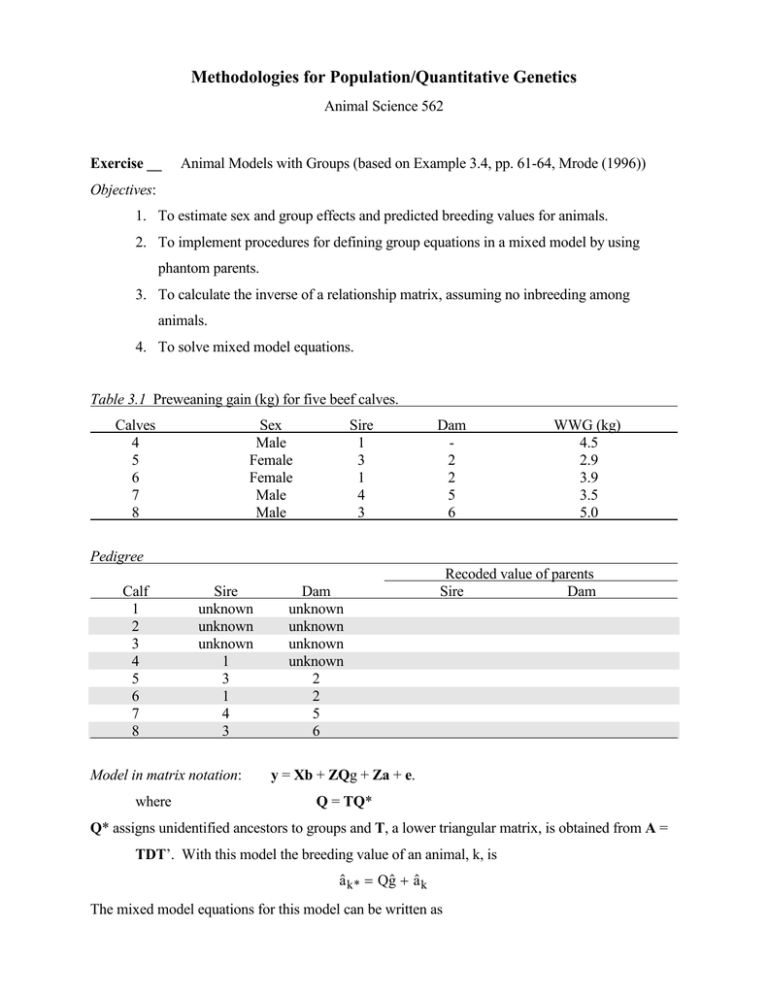
Methodologies for Population/Quantitative Genetics
Animal Science 562
Exercise __
Animal Models with Groups (based on Example 3.4, pp. 61-64, Mrode (1996))
Objectives:
1. To estimate sex and group effects and predicted breeding values for animals.
2. To implement procedures for defining group equations in a mixed model by using
phantom parents.
3. To calculate the inverse of a relationship matrix, assuming no inbreeding among
animals.
4. To solve mixed model equations.
Table 3.1 Preweaning gain (kg) for five beef calves.
Calves
4
5
6
7
8
Sex
Male
Female
Female
Male
Male
Sire
1
3
1
4
3
Dam
2
2
5
6
WWG (kg)
4.5
2.9
3.9
3.5
5.0
Pedigree
Calf
1
2
3
4
5
6
7
8
Sire
unknown
unknown
unknown
1
3
1
4
3
Model in matrix notation:
where
Dam
unknown
unknown
unknown
unknown
2
2
5
6
Recoded value of parents
Sire
Dam
y = Xb + ZQg + Za + e.
Q = TQ*
Q* assigns unidentified ancestors to groups and T, a lower triangular matrix, is obtained from A =
TDT’. With this model the breeding value of an animal, k, is
a$ k * = Qg$ + a$ k
The mixed model equations for this model can be written as
Animal Science 562
X' X
X' Z
0 b$
Z' X Z' Z + A −nn1α A −np1α a$ + Qg$ =
A −pn1α
A −pp1α g$
0
X ' y
Z' y
0
where n is the number of animals and p the number of groups
A
−1
A −nn1
= −1
A pn
−1
A np
−1
A pp
Assignment:
A1. Assign one phantom parent identification to the unknown sires and another to the
unknown dams.
A2. How many rows and columns are in each of the three matrixces Q = TQ* ?
Matrix
Rows
Columns
Q
T
Q*
A3. Give the numerical values for each of the three matrices Q = TQ* ?
Q
T
2
Q*
Animal Science 562
A4. Give the inverse of the relationship matrix including the unknown phantom parents.
A5. Give the complete set of mixed model equations and right-hand-sides for this exercise.
Right-hand-sides
b1
b2
a1
a2
a3
a4
a5
a6
a7
a8
g1
g2
A6. Solve the mixed model equations. Note: solutions will need to be obtained by imposing one
restriction on the group equations.
SEX:
ANIMALS:
GROUPS:
1
2
1
2
3
4
5
6
7
8
1
2
3
